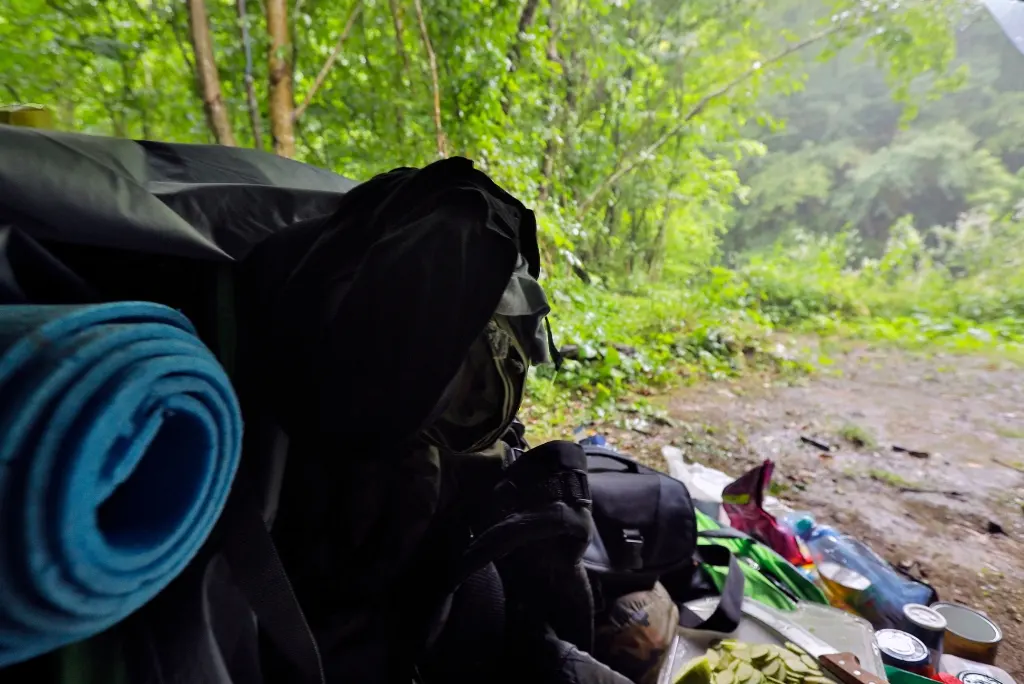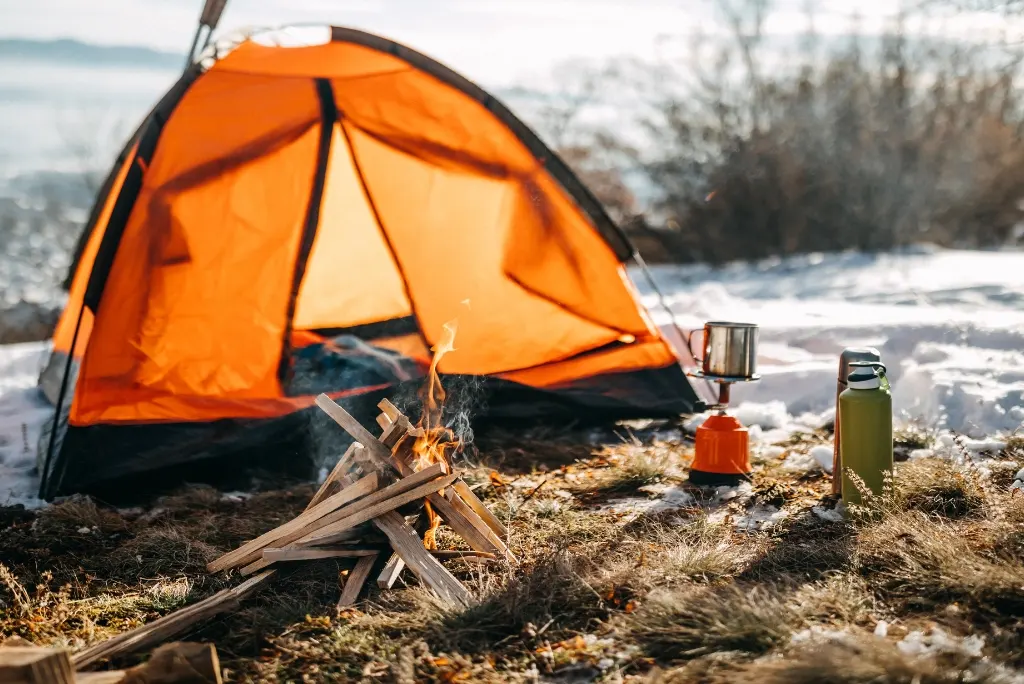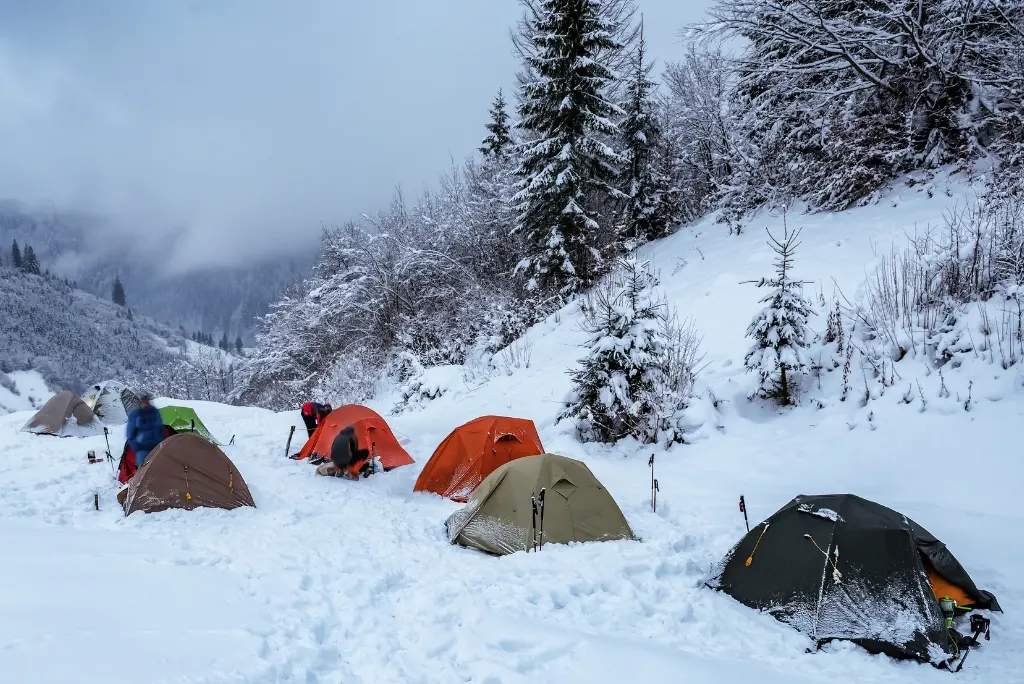How Cold is Too Cold for Camping: A Comprehensive Guide
Camping is a beloved outdoor activity that allows people to connect with nature and experience the beauty of the great outdoors. While many choose to camp during the warmer months, there is a certain allure to camping in colder temperatures.
However, it is essential to understand the ideal temperature range for camping to ensure safety, comfort, and an enjoyable experience. This comprehensive guide will explore various temperature ranges and provide insights into how cold is too cold for camping.
How Cold is Too Cold for Camping?
70°F (21°C) is considered perfect for most people. Camping can be done in much colder temperatures and it depends on your preparedness, experience, and tolerance to the cold.
By understanding the temperature ranges and implementing the appropriate gear and techniques, you can comfortably camp in conditions well below freezing.
Factors Affecting Cold Tolerance
When it comes to camping in cold temperatures, several factors come into play, influencing an individual’s ability to tolerate the cold.
Understanding these factors is crucial for determining how cold is too cold for camping. Let’s delve into the key aspects that affect cold tolerance:
1. Personal Tolerance:
Each person has a different level of tolerance to cold temperatures. What may be unbearable for one camper might be comfortable for another. Factors such as age, overall health, and individual body composition can influence personal cold tolerance.
2. Experience:
Camping experience plays a significant role in cold tolerance. Seasoned campers who have faced colder conditions in the past may have developed better coping mechanisms and strategies to stay warm. Novice campers, on the other hand, may find it more challenging to endure extreme cold temperatures.
3. Clothing:
The type and quality of clothing worn during camping greatly impact cold tolerance. Proper layering with thermal or insulating materials can help retain body heat and provide insulation against the cold. Factors to consider include:
- Base Layer: Moisture-wicking fabric to keep the body dry and regulate temperature.
- Insulation Layer: Thick clothing like fleece or down jackets to trap heat.
- Outer Layer: Waterproof and windproof outerwear to protect against the elements.
- Accessories: Hats, gloves, scarves, and warm socks to prevent heat loss from extremities.
4. Gear:
The camping gear you use can also influence how well you tolerate cold temperatures. Here are some gear-related factors to consider:
- Sleeping Bag: Choose a sleeping bag with an appropriate temperature rating for the expected cold conditions.
- Sleeping Pad: A well-insulated sleeping pad provides an extra layer of insulation between your body and the cold ground.
- Tent: Opt for a four-season tent that provides better protection against wind, rain, and cold air infiltration.
5. Shelter:
The choice of shelter can impact cold tolerance. A well-insulated and weatherproof tent or camper can help retain heat and shield you from the cold.
Additionally, setting up camp in a location that is sheltered from wind and has natural barriers, like trees or rock formations, can provide additional protection from chilling gusts.
Camping in 60°F (15°C)
At 60°F (15°C), camping can be a comfortable experience, albeit on the cooler side. The days may still be relatively warm, but the nights can be chilly. It is crucial to be prepared for the temperature drop during the evening and nighttime hours.
When camping in 60°F (15°C), you’ll need to bring appropriate gear, such as:
- A three-season tent
- A three-season sleeping bag (Comfort rating of 40°F), extra layers, and a three-season tent that provides insulation.
- Air mattress with an R-value of 2-3.
To make camping in this temperature range more enjoyable, consider wearing layered clothing, including a warm base layer, insulating mid-layers, and a waterproof outer shell.
Additionally, bringing a camping stove and warm beverages can help keep you comfortable during the cooler hours.
Camping in 50°F (10°C)

The days may still offer pleasant temperatures, but the evenings and early mornings can be quite cold. It is important to take precautions to stay warm and dry to avoid risks of risks include chilly nights, mornings, and hypothermia if wet.
In temperature range, you’ll need the similar gear to camping in 60°F (15°C), but with a sleeping bag rated for 32°F (0°C), an air mattress with an R-value of 3 to 4 and extra blankets and hand warmers to combat the cold.
Read more about: How to Keep a Tent Warm Without Electricity?
Camping in 40°F (5°C)
When camping in 40°F (5°C) weather, the temperature drop becomes more noticeable, and the cold and potential rain can pose challenges. It is essential to be well prepared and take the necessary precautions to ensure a safe and enjoyable camping experience.
At this temperature, winter-specific gear recommended, including:
- Using a winter sleeping bag rated for temperatures of at least 14°F (-10°C).
- Proper layering of clothing is essential to trap body heat.
- Insulated jackets, thermal hats, gloves, and warm socks are must-haves.
- It is also advisable to use a four-season tent with a rainfly and vestibule to create a barrier against the cold wind.
Be aware
At 40°F (5°C), there is a higher risk of hypothermia and frostbite on chilly nights and mornings in the case of exposure to the wet.
Hypothermia is possible within 30 minutes, and frostbite is possible within two hours.
Camping in 30°F (-1°C)

At 30°F (-1°C), camping becomes a freezing experience. It is vital to pay extra attention to staying dry and warm in such low temperatures. Frostbite and hypothermia become real risks, so taking the necessary precautions is paramount.
- A high-quality four-season sleeping bag designed for cold temperatures is essential.
- Insulated sleeping pads or air mattresses with high R-values provide insulation from the frozen ground.
- Layering becomes even more crucial, and it is advisable to wear moisture-wicking base layers, heavyweight insulating jackets, thermal pants, and warm boots.
- It is also recommended to bring a tent with a sturdy frame capable of withstanding strong winds and snowfall.
Read more about: Tips for Camping in 30-Degree Weather
Camping in 20°F (-7°C)
Camping in 20°F (-7°C) weather takes camping to extreme cold conditions. It requires specialized gear and clothing to ensure safety and comfort. However, it also offers unique advantages and a sense of adventure for those willing to brave the elements.
In this temperature range, investing in a high-quality winter camping tent is essential.
- Look for tents with strong frames, snow skirts, and good insulation.
- Cold-weather sleeping bags with advanced insulation, such as goose down, are recommended.
- Layering should include heavyweight base layers, thick insulated jackets, insulated pants, thick socks, and insulated boots.
- Hand and foot warmers can provide extra comfort in the extreme cold.
Camping in 10°F (-12°C)

At 10°F (-12°C), camping reaches a serious deep freeze. This temperature range requires advanced planning, specialized gear, and utmost caution. It is not suitable for inexperienced campers or those ill-prepared for extreme cold conditions.
To camp in such low temperatures, it is crucial to have:
- Four-season tent or hot tent.
- An expedition-grade sleeping bag designed for arctic conditions (Comfort rating of -22°F).
- At least 1 tarp for shelter from rain and wind.
- Insulated air mattresses with high R-values (5+) and cold-weather tents with reinforced frames are necessary.
- Layering should include heavyweight base layers, insulated parkas, waterproof pants, extreme cold-weather gloves, and insulated boots rated for extreme cold.
- Face masks and goggles may also be required to protect against frostbite and windburn.
Related article:
FAQ Section:
-
Can I use a regular tent for cold-weather camping?
While a regular tent may work in milder cold conditions, it’s advisable to use a four-season or cold-weather tent designed for insulation and stability in extreme cold.
-
How can I prevent condensation inside the tent?
Proper tent ventilation, using a rainfly with minimal mesh exposure, and keeping wet gear outside the sleeping area can help reduce condensation buildup.
-
Are there any safety precautions I should take when camping in freezing temperatures?
Yes, it’s essential to check weather forecasts, inform others about your plans, carry emergency communication devices, and be aware of nearby shelter options in case of emergencies.
Conclusion
Camping in colder temperatures can be an incredible adventure, allowing you to experience the beauty of nature in a unique way.
However, it is important to understand the temperature ranges and take appropriate measures to ensure safety and comfort. Proper gear, including cold-weather sleeping bags, insulated clothing, and sturdy tents, is crucial for camping in colder temperatures.
Always check the weather forecast before embarking on a camping trip and adjust your preparations accordingly. Remember to prioritize safety, stay dry and warm, and be mindful of the signs of hypothermia and frostbite.
With the right gear, preparation, and safety measures, camping in colder temperatures can be a rewarding and unforgettable experience. Embrace the adventure and enjoy the wonders of camping in all seasons.